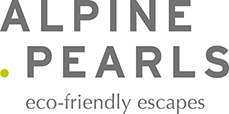1. Insulate the house properly: ensure that the walls, roof and floors are properly insulated to prevent heat loss and reduce the need to use heating.
2. Use energy-efficient appliances: replace old, inefficient appliances with newer, more energy-efficient models.
3. Turn off lights and electronics when not in use: reduce energy consumption by simply turning off lights and electronics when not in use.
4. Use renewable energy sources: consider installing solar panels or other renewable energy sources to reduce dependence on conventional energy sources.
5. Optimise household energy use: make the best use of energy at peak times, avoiding turning on high-powered appliances at the same time and scheduling the use of appliances to reduce consumption peaks.
6. Keep heating and cooling systems well maintained: clean air filters regularly, check and repair any air leaks in ducts, and keep heating and cooling systems in optimal condition to reduce energy waste.
7. Set the thermostat correctly: set the temperature of radiators and air conditioning to comfortable but not excessive levels to reduce energy consumption.
8.Folgaria will have a new, safer, more efficient and above all 100% green light, which will produce energy savings of over 70%.
The redevelopment project envisages the installation of cutting-edge LED technology and an advanced remote control system that will reduce energy consumption and the respective climate-altering emissions, for more efficient, sustainable and effective lighting.
Within the framework of actions aimed at improving energy efficiency and service to citizens, on 28 April ‘23 the Municipal Administration resolved for the Municipality of Folgaria to join Consip's Light 4 Service, entrusted to the company City Green Light, active in the field of public lighting, energy efficiency and smart city services.
The works started on 1 September and the public lighting upgrading process will be completed within the first year of service, with the replacement of 1573 lighting points with high-efficiency LED sources.
This initiative will lead to expected energy savings of more than 70 per cent compared to the current situation, with a reduction in consumption of more than 500,000 kWh/year and a reduction in emissions of around 90 tonnes of CO2 equivalent per year.
The electrical distribution boards will be modernised or replaced and all supporting poles will be maintained.
The new lighting system therefore aims to improve efficiency and performance compared to its predecessor, limiting light pollution and providing superior visual comfort. This will contribute to safer streets and more citizen-friendly urban spaces.
The service includes the regulatory retrofitting of all traditional lighting points with LED sources, the sharing of energy savings, the installation of remote controls on the entire system, participation in the Public Energy Living Lab (PELL) project promoted by the National Agency for New Technologies, Energy and Sustainable Economic Development (ENEA), and ordinary and extraordinary maintenance.
The public lighting installations of the Municipality of Folgaria consist of 2,004 lighting points, which include street lighting, street furniture and illumination of streets and monuments.
In addition to the renewal of the lighting points, investments will be made for the replacement of damaged supports, the replacement and adaptation of power supply switchboards, as well as other works for upgrading.
9.To reduce light pollution, all external light sources should be shielded and directed downwards.
10.To reduce noise pollution, rooms and/or the facility should be acoustically insulated and events should only be organised acoustically.
Here is some information to reduce noise pollution (MUNICIPAL REGULATION ON URBAN POLICY approved by resolution of the Extraordinary Commissioner no. 21 dated 24.05.2019)
a) Noisy activity: the activity causing the introduction of noise into the living environment or the external environment such as to cause annoyance or disturbance to rest and human activities, danger to human health, deterioration of ecosystems, material goods, monuments, the living environment, the external environment or such as to interfere with the legitimate enjoyment of these environments.
b) Noisy activity of a temporary nature: any noisy activity that is exhausted in limited periods of time or linked to variable locations. Repetitive and/or recurring activities that are part of production processes carried out within the area of the settlement are to be excluded.
1. Noisy activities of a temporary nature, according to the definition in art. 2 of these regulations, are those carried out in public establishments, in support of the main authorised activity, or in private clubs, if in the space of a month they do not exceed 4 times in an outdoor environment and 8 times in a confined environment.
2. Similarly, noisy activities of a temporary nature are those (music, rallies, use of electro-acoustic broadcasting or amplification equipment) carried out in a public place or a place open to the public as part of shows, festivals, celebrations, fun fairs, tourist and sporting events, as well as musical, party, trade union, charity and similar events, provided that they are carried out over a limited period of time or take place in a non-permanent manner on the same site.
3. The use of playing fields, whether public or open for public use, outdoors near dwellings that involves the use of loud voices to communicate between players or otherwise the emission of noise is permitted only during the periods referred to in Article 42.
4. If the use of air recirculation, refrigeration or air conditioning systems and cold storage rooms, systems or generators, fans and household appliances in general including televisions or radios, may cause annoyance or disturbance to the rest and activities of the environment or
living quarters of third parties, the interval periods referred to in Article 42 must be respected.
The sound diffusion systems used must, in any case, be suitably located and shielded so as to limit, as far as possible, noise exposure in neighbouring living environments.
5. Anyone who violates the provisions of this article is subject to administrative sanctions
Who controls?
1. The municipal administration ensures compliance with the provisions contained in this regulation, also by means of phonometric measurements if necessary.
2. They are responsible for carrying out checks on compliance with these provisions, in addition to the bodies indicated in the art. 13 of Law 24 November 1981, n. 689, also the municipal surveyor responsible for the phonometric detection of noise emissions, the construction site manager and the municipal technical manager if they have an identification card signed by the Mayor. The municipal administration may also arrange checks on the interventions referred to in articles 45 to 50, in order to evaluate the consistency of the project data with what has been achieved.
1. The municipal administration promotes awareness and information campaigns, particularly in schools, with the aim of making the population aware of the problems associated with noise pollution.












